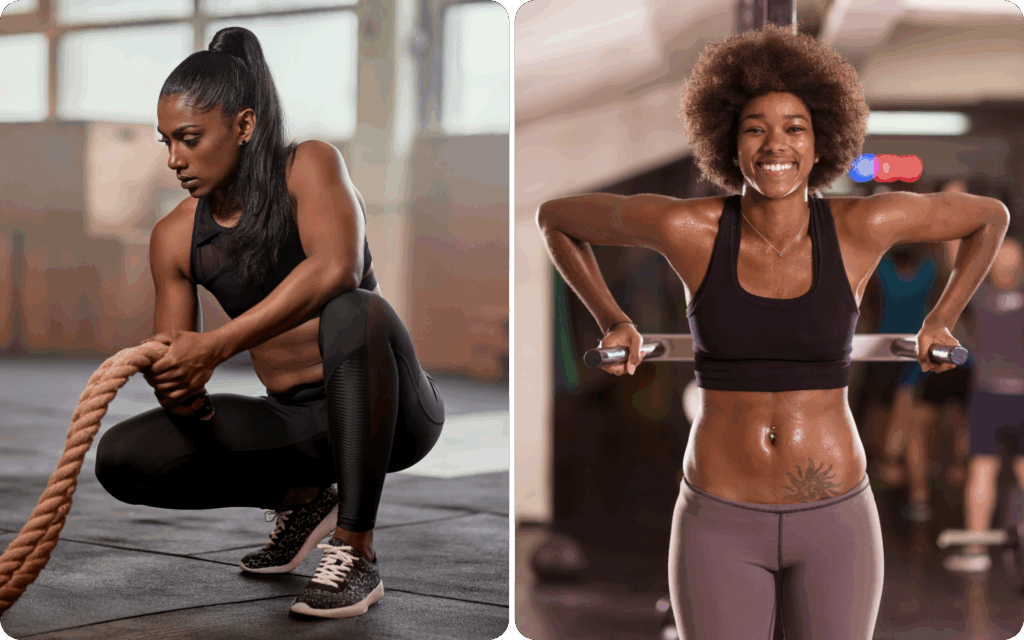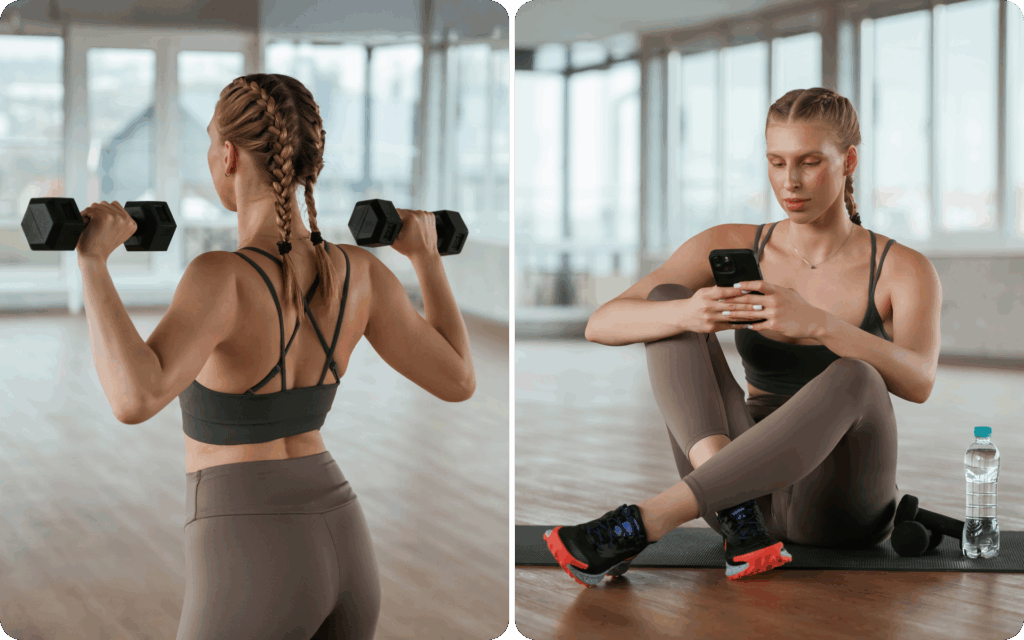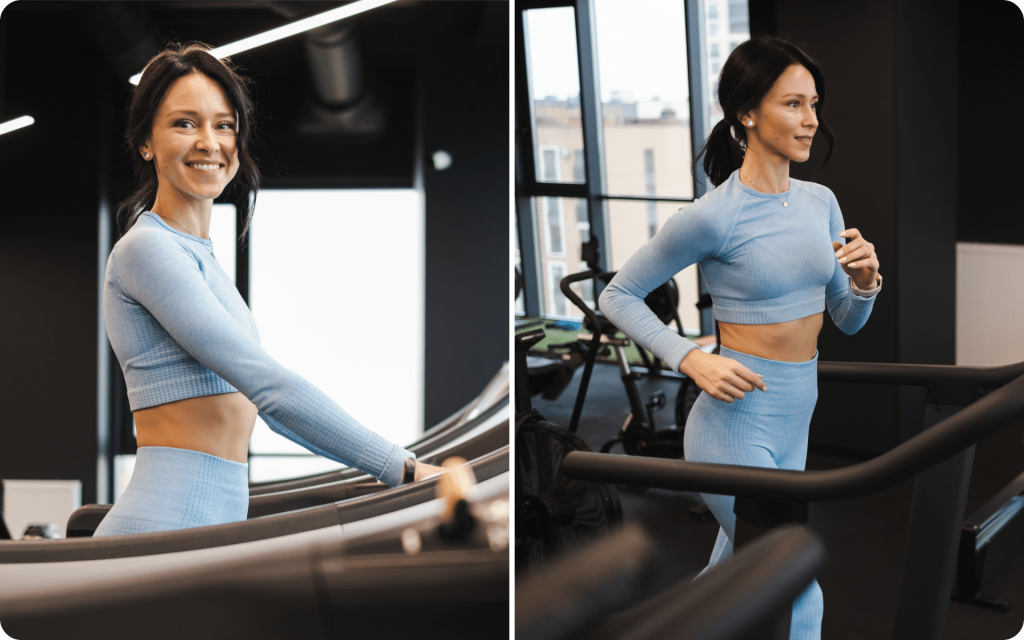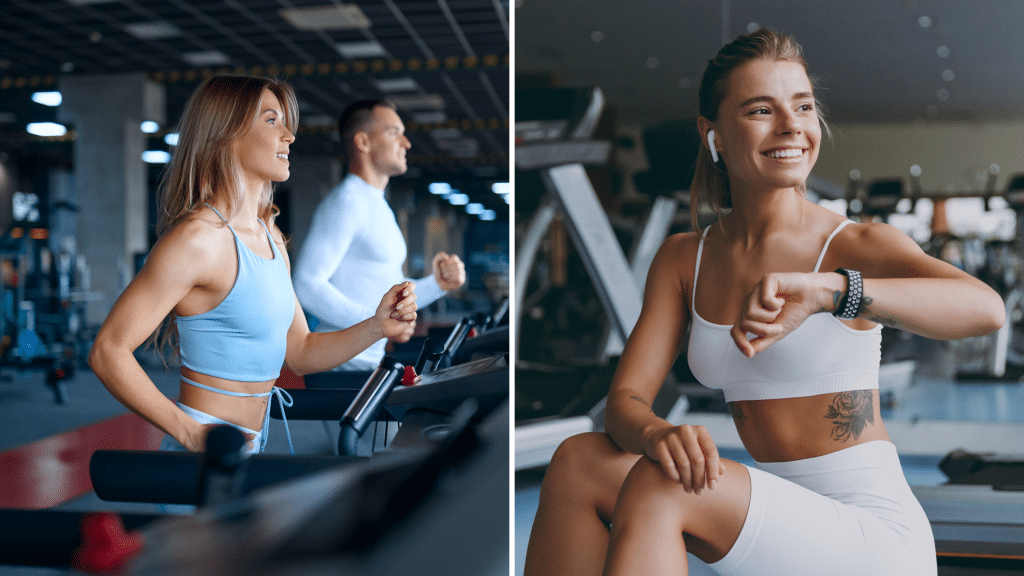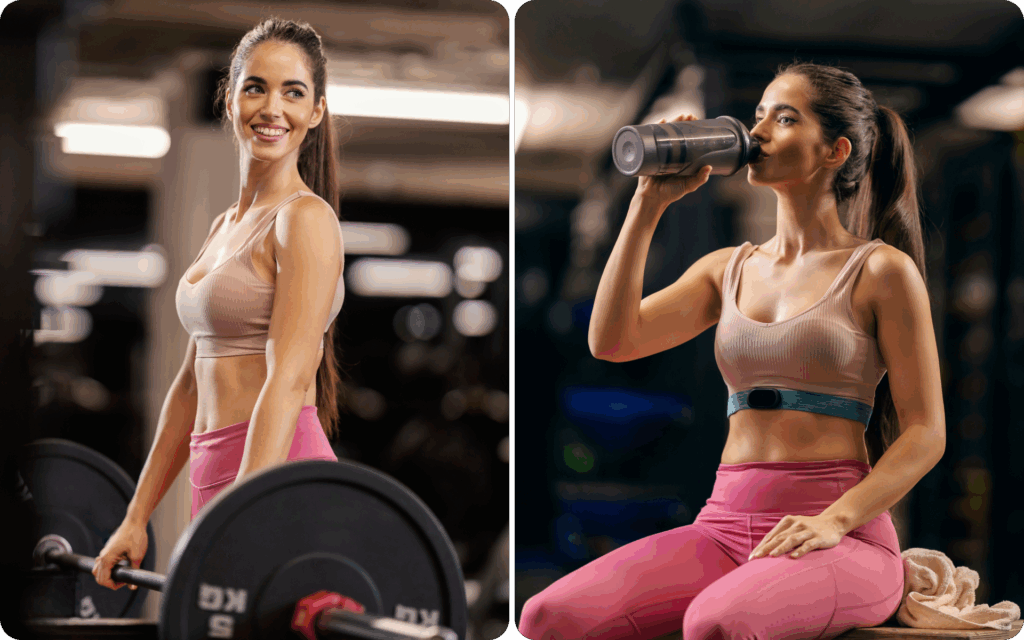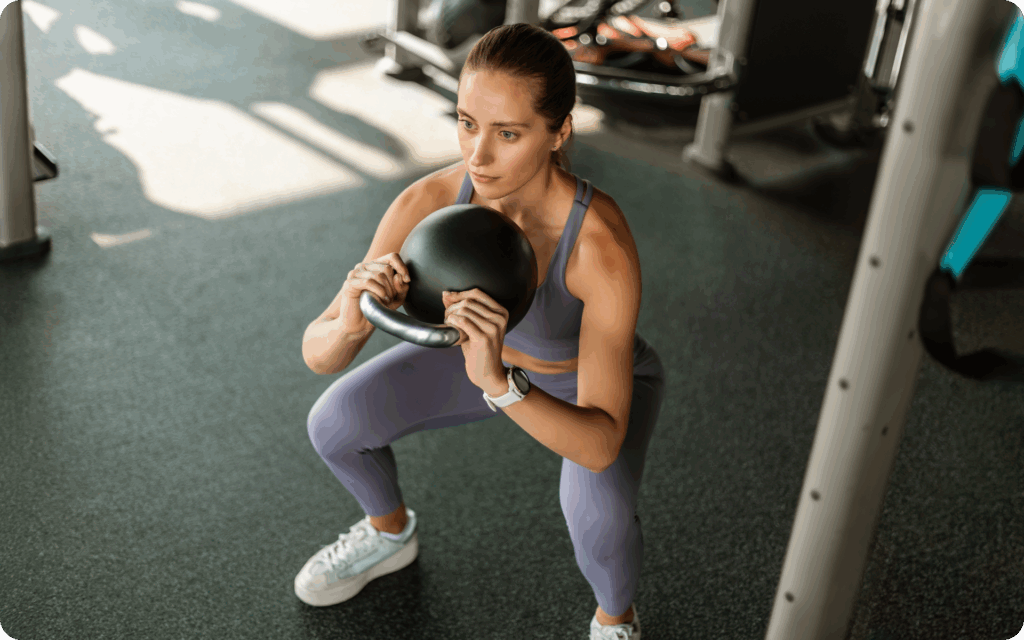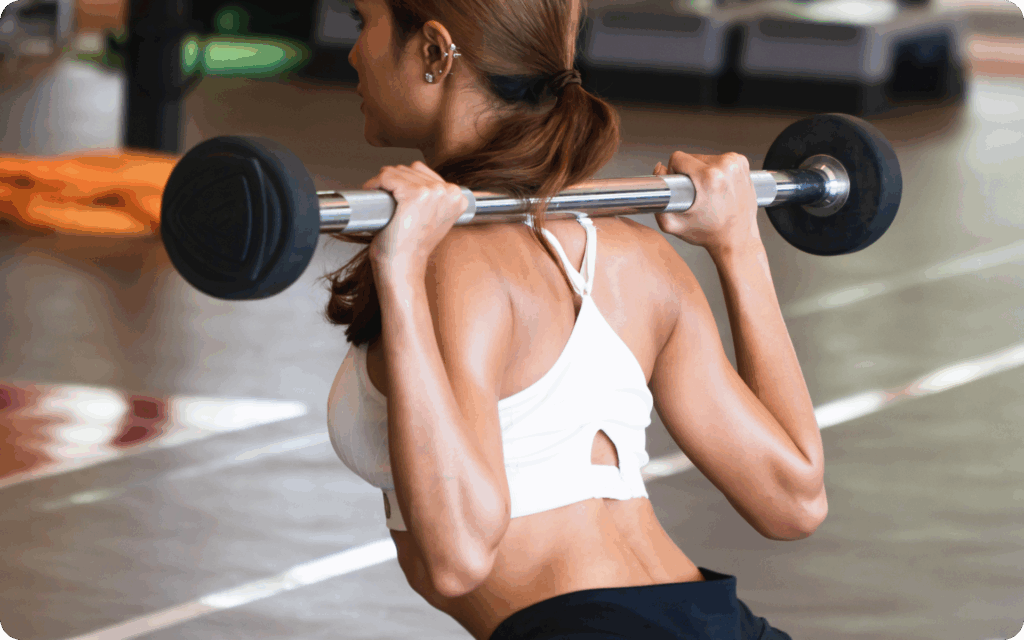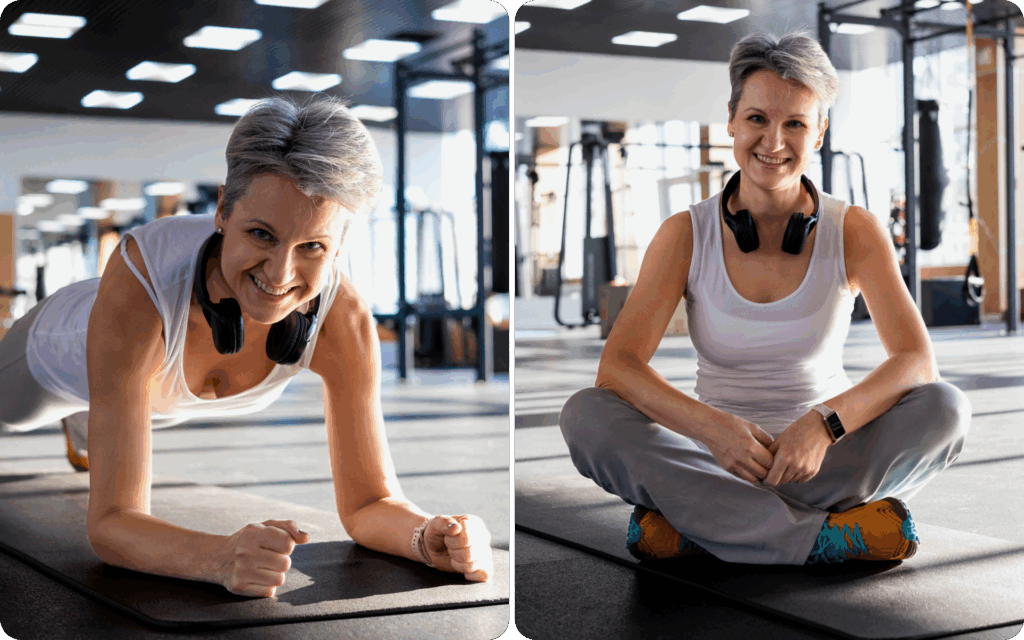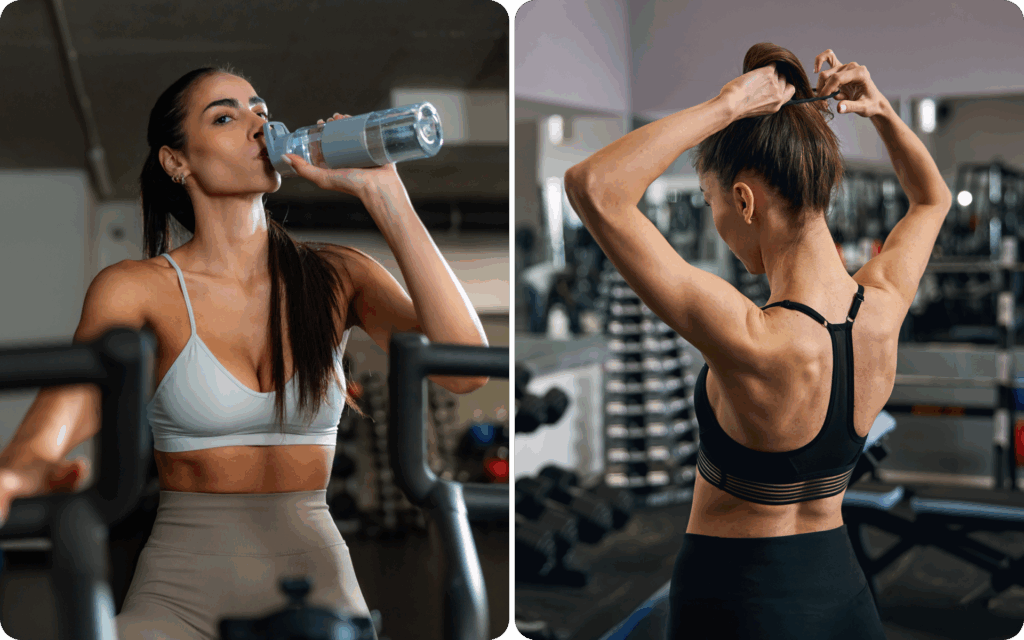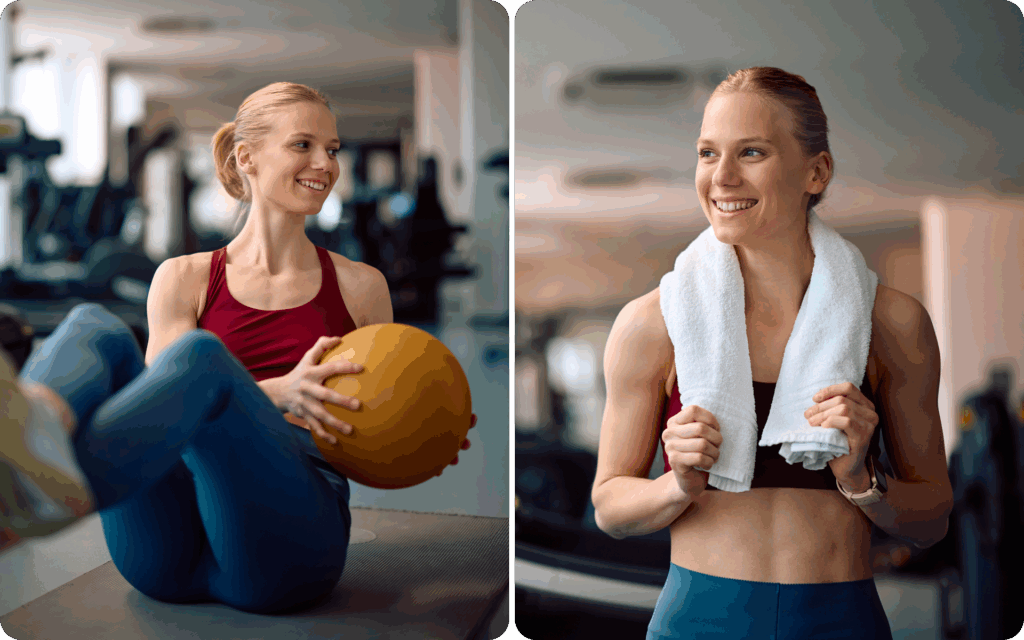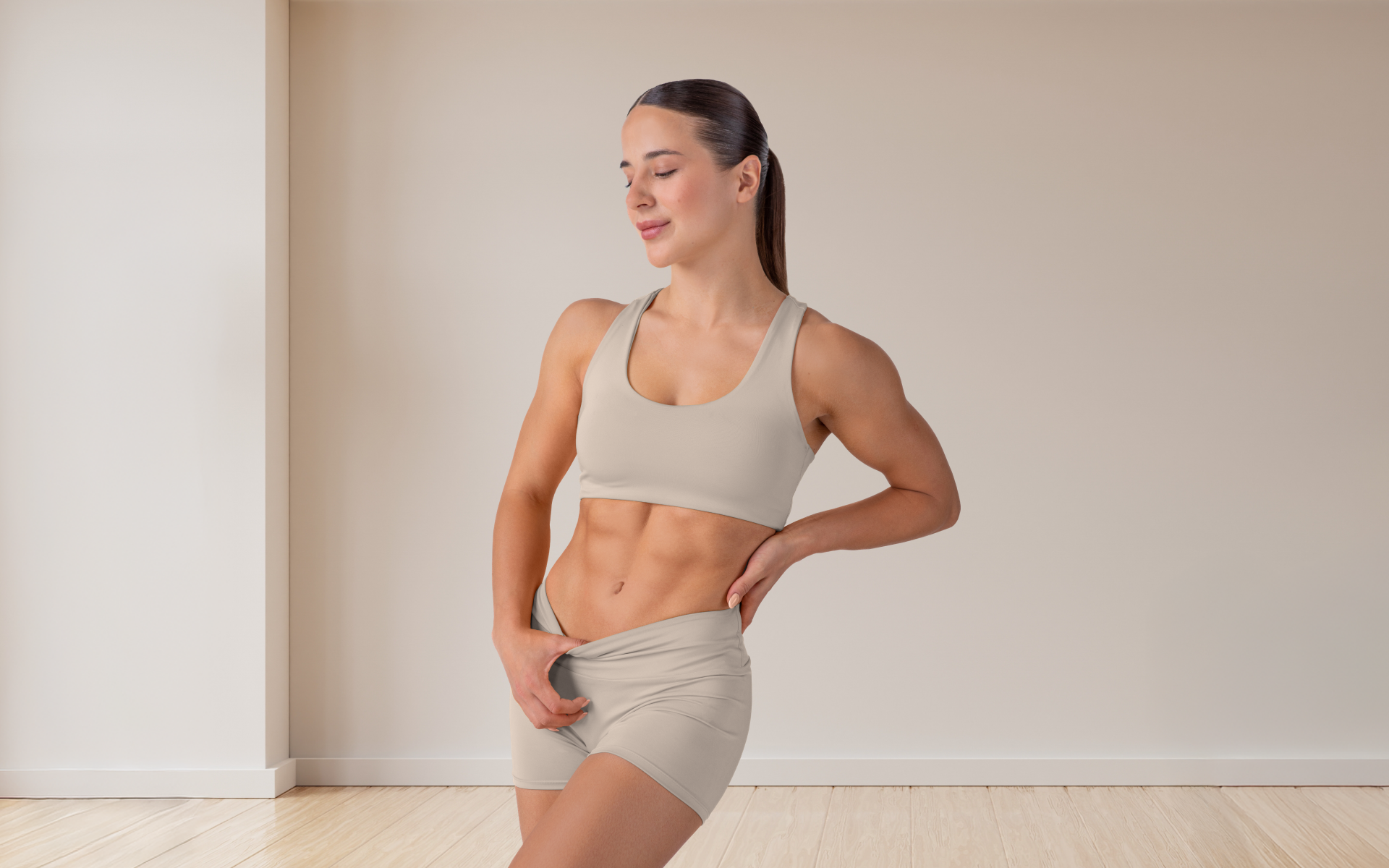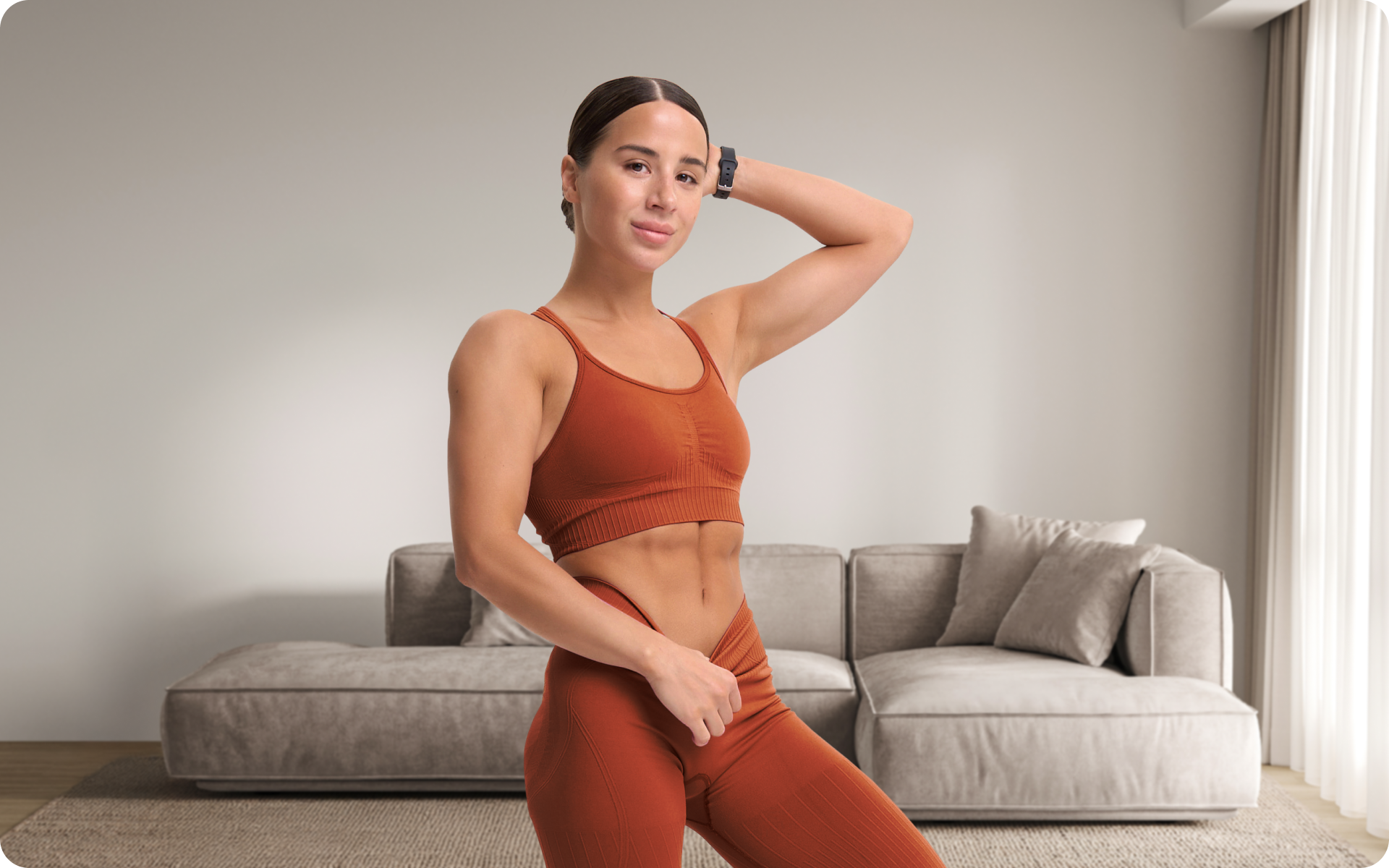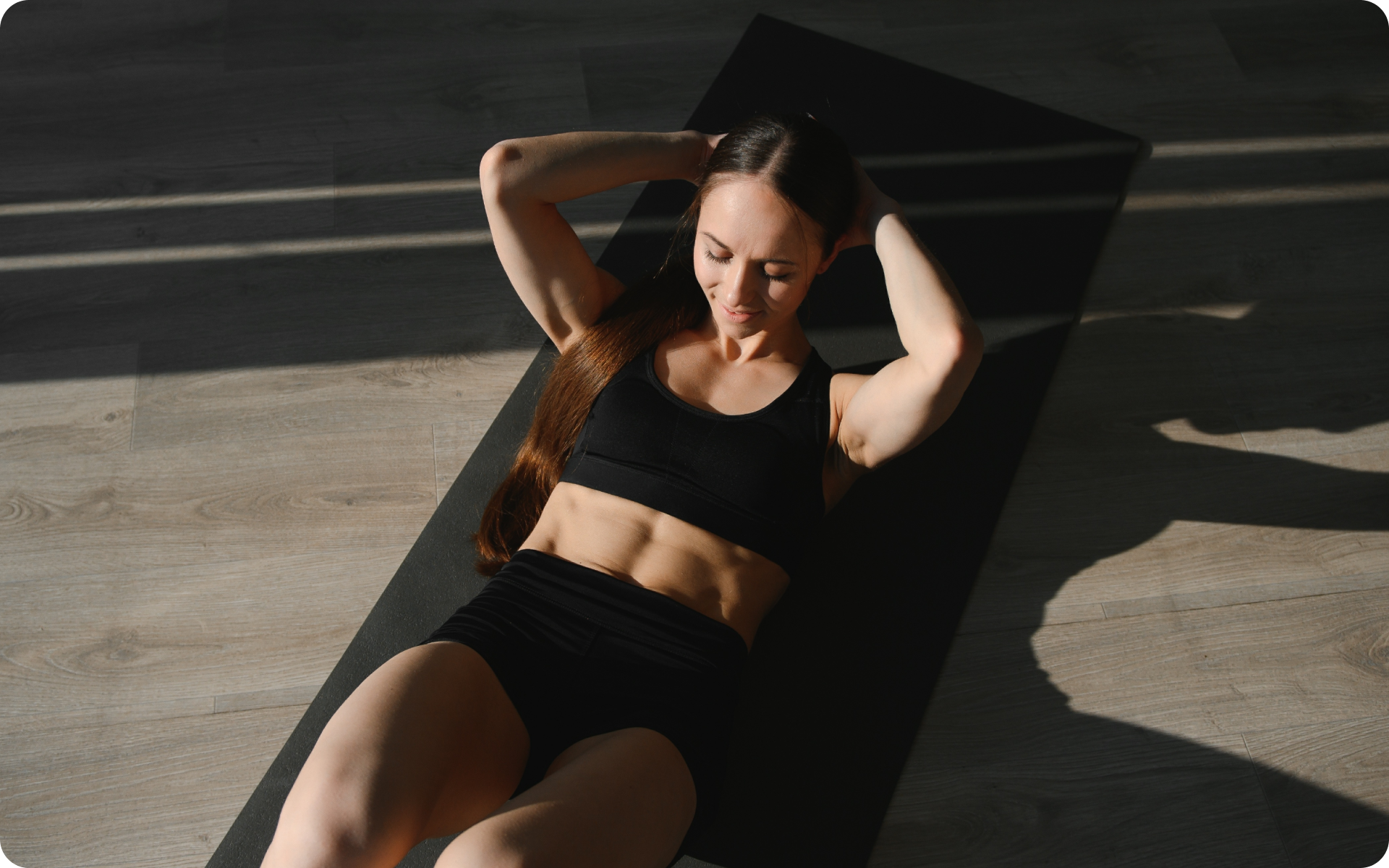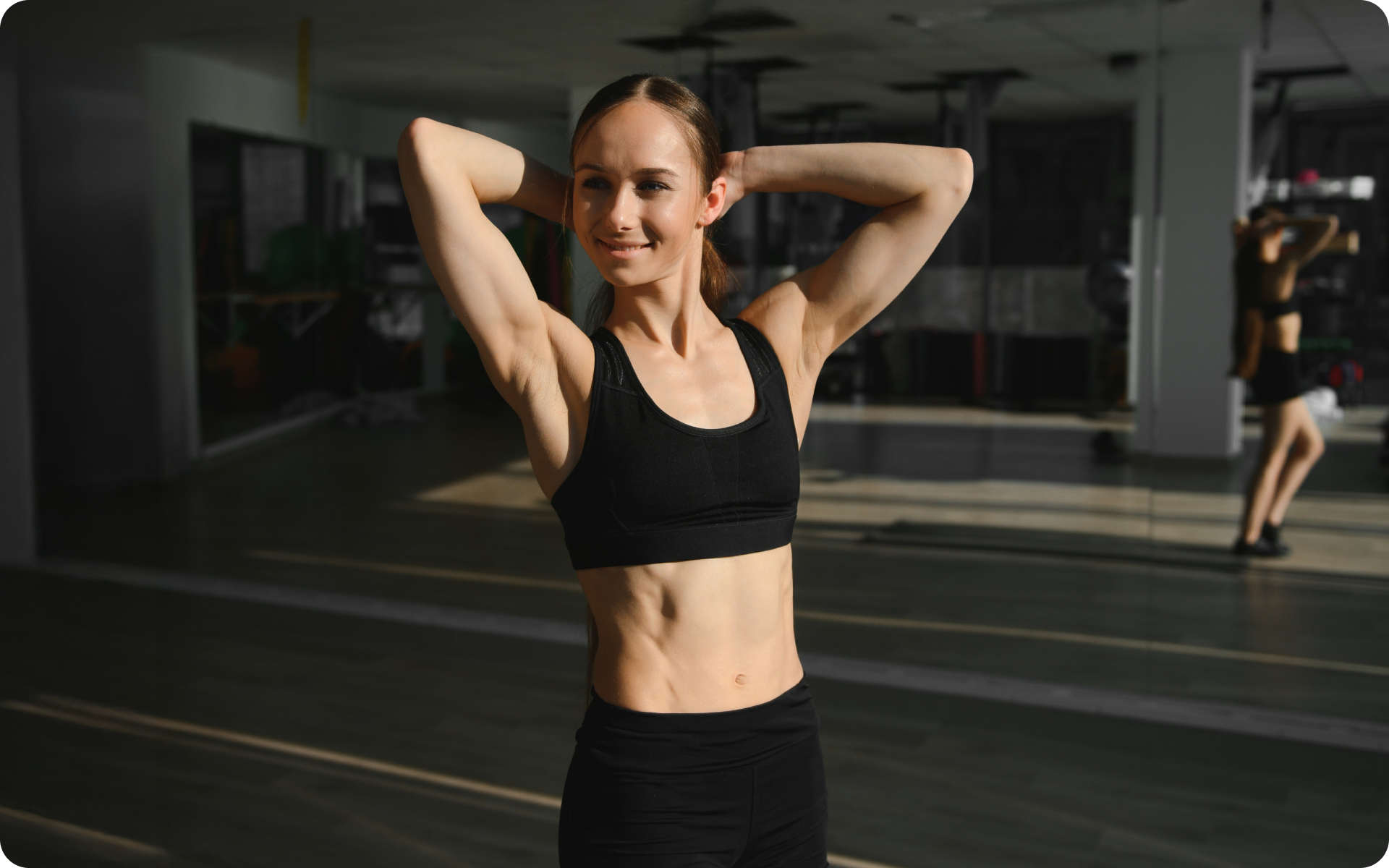Losing belly fat is one of the most common fitness goals, but it’s also one of the most misunderstood. Many people spend hours chasing quick fixes or isolating certain exercises, only to see minimal results.
The truth is, shedding belly fat requires more than abdominal crunches or endless cardio sessions. It’s a multifaceted process that is influenced by factors such as nutrition, cardiovascular fitness, strength training, and recovery.
It’s equally important to balance fat loss with muscle retention and toning. Without a structured approach to your gym workout to lose belly fat, you risk losing the very muscle that helps boost your metabolism and create a lean, defined physique. This delicate balance is both a challenge and an opportunity for improvement through strategic gym workouts.
This article will provide you with a science-backed gym workout to lose belly fat and tone muscle effectively. We’ll explore the types of exercises, training styles, and actionable strategies that harmonize your body’s systems to maximize results.
Why Is Belly Fat so Hard to Lose?
Losing belly fat often feels challenging. This difficulty stems from numerous factors such as:
- Biological
- Hormonal
- Lifestyle
Collectively, these make losing belly fat highly nuanced, but not impossible.
From a biological standpoint, our bodies are designed to store fat as a survival mechanism (1). This deep abdominal fat, which is called visceral fat, acts as an energy reserve and provides insulation (2). While it’s practical in times of famine, this storage system can be disadvantageous when paired with modern sedentary lifestyles and caloric abundance.
Hormonal regulation also plays a significant role.
- Cortisol – known as the stress hormone, it can promote fat accumulation in the belly region when chronic stress levels remain high (3).
- Insulin resistance – often linked to poor dietary habits, it can cause excess energy from food to deposit as fat, particularly around the midsection (4).
BetterMe: Health Coaching app helps you achieve your body goals with ease and efficiency by helping to choose proper meal plans and effective workouts. Start using our app and you will see good results in a short time.
Lifestyle choices can also amplify these physiological challenges:
- Poor sleep disrupts hormones that control hunger and fat metabolism (5)
- A diet high in processed sugars and simple carbohydrates exacerbates fat storage (6, 7)
- Minimal physical activity reduces energy expenditure, which makes it harder to create the calorie deficit that is required for fat loss (8)
Belly fat loss feels challenging, not because of one single factor, but due to the combination of these biological, hormonal, and lifestyle influences. Acknowledging these complexities can empower you to take a multi-faceted approach.
Learn more about the different types of stomach fat and how they affect your health.
Read more: 3-Day Full-Body Gym Workout for Female Beginners
Can I Lose Belly Fat in the Gym?
Yes, you can lose belly fat with gym workouts, but exercise alone isn’t enough. The gym offers tools to create a consistent exercise routine, combining strength training and cardiovascular workouts, which are essential for fat loss and metabolism (9).
However, the reduction of belly fat depends on achieving a calorie deficit, which is primarily influenced by your diet (10).
At the same time, there are other factors that play essential roles and can sabotage your fat loss (11). These include:
- Poor stress management
- Poor quality of sleep
- Hormonal dysregulation
A well-rounded approach that integrates gym workouts with healthy lifestyle habits will yield the best results.
Which Machine at the Gym Is Best for Belly Fat?
When it comes to losing belly fat, the idea of a single “best” gym machine can be misleading. While incorporating specific machines into your workout can significantly enhance your fitness routine, no machine alone can directly target fat in the abdominal area.
As with overall fat loss, belly fat loss occurs when your body is consistently in a calorie deficit, which can be achieved through a balance of:
- Sufficient exercise at proper intensity
- Proper nutrition with a caloric deficit
- Adequate sleep and recovery
That being said, certain machines are particularly effective for supporting fat-burning and muscle-toning efforts, both of which are essential for reducing belly fat.
Cardio Machines for Fat Loss
Cardio machines are excellent for creating a calorie deficit and improving cardiovascular health, which are key components of fat loss (12). Some great choices include:
- Treadmill: Walking, jogging, or running on a treadmill engages multiple muscle groups, burns significant calories, and allows for flexible intensity adjustments.
- Rowing Machine: This offers a full-body workout, targeting both upper- and lower-body muscles while increasing heart rate for effective calorie burn.
- Stair Climber: Combining strength and cardio, this machine activates large muscle groups such as the glutes, quads, and hamstrings, leading to enhanced calorie burn during and after the workout.
- Elliptical Trainer: With minimal joint impact, the elliptical provides a balanced cardiovascular workout that can be sustained for longer durations.
Strength-Training Machines for Muscle Toning
Strength training plays a crucial role in belly fat reduction, as it increases muscle mass, which boosts metabolism (13). While free weights are often preferred, machines can provide targeted, safe, and scalable strength training. Consider these machines:
- Cable Machines: Highly versatile and customizable, these can be used for compound movements like cable squats or core exercises such as woodchoppers, which engage the entire body.
- Leg Press: Focusing on the lower body, this machine develops muscles that play a significant role in burning calories throughout the day.
- Lat Pulldown or Pull-Up Assist Machines: These emphasize upper-body strength and activate the core muscles as stabilizers during the movement.
Combining Efforts for Maximum Results
For a well-rounded fat-loss strategy, consider alternating between high-intensity cardio sessions and strength training circuits that incorporate these machines.
High-intensity interval training (HIIT) on machines such as the treadmill or rowing machine is particularly effective for maximizing calorie burn in a short period. (14)
On the other hand, strength-focused workouts help preserve and build muscle during your fat-loss phase.
Read more: What’s a Gym Workout Set and How Do You Use It?
What Exercise Burns the Most Belly Fat at the Gym?
Certain exercises are highly effective for overall fat burning and building lean muscle mass, which, in turn, supports belly fat reduction. These movements are effective because:
- They engage multiple muscle groups
- They elevate your heart rate
- They boost metabolism, which leads to increased calorie burn
Treadmill Intervals (High-Intensity Interval Training)
Treadmill intervals involve alternating between high-intensity running and low-intensity walking or rest periods. This approach taps into both aerobic and anaerobic energy systems, which significantly increases calorie burn.
How to Perform:
- Start with a warm-up by walking or jogging for 3-5 minutes.
- Run at 85-90% of your maximum effort for 20-30 seconds.
- Reduce the speed to a brisk walk or light jog for 60-90 seconds to recover.
- Repeat the sprint/rest cycle for 8-10 rounds.
- Finish with a 3-minute cool-down at a moderate walking speed.
Barbell Deadlifts
Deadlifts are a compound movement that engages the posterior chain (glutes, hamstrings, and lower back), core, and grip strength. The amount of muscle mass activated makes it a highly metabolic exercise.
How to Perform:
- Stand with your feet shoulder-width apart and position a loaded barbell over your mid-foot.
- Bend at the hips and knees, gripping the bar just outside your knees. Keep your back straight and chest up.
- Drive through your heels and extend your hips and knees to lift the bar.
- Once fully upright, pause briefly, then reverse the movement to slowly lower the bar to the floor.
- Perform 3-4 sets of 8-10 repetitions.
Rowing Machine Sprints
Rowing combines cardiovascular conditioning with upper- and lower-body strength. It engages multiple muscle groups in a coordinated pulling motion, including:
- Legs
- Back
- Core
- Arms
All these muscles working together make it a calorie-intensive exercise.
How to Perform:
- Sit on the rower with your feet strapped in and grip the handle with both hands.
- Push off strongly with your legs while leaning back slightly, pulling the handle toward your chest.
- Return to the starting position by reversing the motion in a controlled manner.
- Perform sprints of 20-30 seconds at maximum intensity, followed by 60-90 seconds of lower-intensity rowing.
- Complete 8-10 intervals.
Kettlebell Swings
This dynamic movement targets the hips, glutes, hamstrings, core, and shoulders while also providing a cardiovascular challenge. Kettlebell swings are excellent for increasing heart rate and calorie burn.
How to Perform:
- Stand with your feet shoulder-width apart, gripping a kettlebell with both hands.
- Hinge at your hips and slightly bend your knees, keeping your back straight.
- Drive through your hips to swing the kettlebell forward to shoulder height.
- Allow the kettlebell to swing back down, controlling the motion with your hips and core.
- Perform 3-4 sets of 15-20 swings.
Cable Woodchoppers
This rotational movement engages the obliques and other core muscles while stabilizing major muscle groups. It mimics functional twisting motions, improving core strength and calorie burn.
How to Perform:
- Attach a single handle to the high pulley of a cable machine.
- Stand sideways to the machine and grab the handle with both hands.
- Pull the handle downward and across your body in a chopping motion, pivoting through your back foot.
- Slowly return to the starting position.
- Complete 10-12 reps per side for 3 sets.
Explore more exercises to flatten stomach and help you achieve your dream body in our previous blog post.
What Is an Effective Gym Workout to Lose Belly Fat?
An effective gym workout program for fat loss combines three variables:
- Strength training
- Cardiovascular exercise
- Dedicated recovery
This approach ensures you burn calories efficiently while building lean muscle mass to boost your metabolism.
Below is a structured 4-day workout split that is designed to maximize fat loss and support belly fat reduction. Remember, sustainable results come from pairing this program with proper nutrition and rest.
Whether you’re a workout beast or just a beginner making your first foray into the world of fitness and dieting – BetterMe has a lot to offer to both newbies and experts! Install the app and experience the versatility first-hand!
Workout Split Overview
- Day 1: Upper-body strength + cardio
- Day 2: Lower-body strength + core
- Day 3: Rest or active recovery (e.g. yoga or stretching)
- Day 4: Full-body circuit + cardio
- Day 5: High-intensity interval training (HIIT)
- Day 6: Rest or active recovery
- Day 7: Cardio + core
Day 1: Upper Body Strength + Cardio
Strength Training (Superset Style):
- Bench press (barbell or dumbbells) – 3 sets of 8-10 reps
- Pull-ups (or lat pulldown) – 3 sets of 8-10 reps
- Shoulder press (dumbbells or machine) – 3 sets of 10-12 reps
- Dumbbell rows – 3 sets of 10 reps per side
Conditioning:
- Cardio intervals on the rowing machine:
- 30 seconds max intensity, 90 seconds slow pace (8 rounds)
Day 2: Lower Body Strength + Core
Strength Training (Focus on Compound Movements):
- Barbell squats – 3 sets of 8-10 reps
- Deadlifts (Romanian or conventional) – 3 sets of 6-8 reps
- Bulgarian split squats – 3 sets of 10 reps per leg
- Leg curl machine – 3 sets of 12-15 reps
Core:
- Cable woodchoppers – 3 sets of 10 reps per side
- Plank with shoulder taps – 3 sets of 30-40 seconds
Day 3: Rest or Active Recovery
Use this day to focus on flexibility, light movement, or any low-impact activity. Foam rolling and dynamic stretching are excellent options to keep your body primed for intense training sessions.
Day 4: Full-Body Circuit + Cardio
Full-Body Strength Circuit: Perform the following as a circuit. Complete 3 rounds with 60-90 seconds rest between circuits.
- Kettlebell swings – 15 reps
- Push-ups (or barbell bench press) – 10-12 reps
- Dumbbell goblet squats – 12-15 reps
- Bent-over rows (barbell or dumbbells) – 10-12 reps
- Plank-to-rows (using dumbbells) – 12 reps per side
Cardio:
- Treadmill jogging intervals:
- 60 seconds jog, 30 seconds sprint (10 rounds)
Day 5: High-Intensity Interval Training (HIIT)
HIIT Workout Options: Choose a machine or exercise that engages both the upper and lower body.
- Rowing machine – 20 seconds max effort, 40 seconds slow row (10 rounds)
- Alternatively, perform burpee intervals off the machine – 15 burpees, followed by 60 seconds rest (10 rounds)
Day 6: Rest or Active Recovery
Prioritize recovery, hydration, and nutrition. Activities such as walking, yoga, or mobility work help keep your performance steady.
Day 7: Cardio + Core
Cardio:
- Stair climber or elliptical trainer for 30-40 minutes at moderate intensity.
Core:
- Hanging leg raises – 3 sets of 12-15 reps
- Russian twists (with or without weight) – 3 sets of 20 reps (10 per side)
- Side plank hold (per side) – 3 sets of 30-45 seconds
Additional Tips for Success
- Consistency: Stick to your workout schedule and gradually increase the weights or intensity.
- Nutrition: Complement your efforts with a balanced diet that’s high in protein, moderate in healthy fats, and low in processed sugars. A good starting point is to get 45-65% calories from carbs, 10-35% from protein, and 20-35% from healthy fat (15).
- Sufficient Sleep and Reduced Stress: Both are essential for recovery and hormone regulation.
By following this structured program, you create an environment where fat loss and muscle retention work hand in hand. Over time, you’ll notice a reduction in belly fat and improved overall strength and endurance.
We highlight simple yet effective flat tummy workouts in our earlier publication.
How to Lose Belly Fat in 2 Weeks at the Gym Step-by-Step
Losing a significant amount of belly fat in just two weeks isn’t a realistic goal. However, these two weeks are an excellent opportunity to build momentum toward long-term, sustainable fat loss. Below is a step-by-step guide to structure your gym sessions effectively while laying the groundwork for lasting results.
Step 1: Define Your Workout Split
Plan your gym sessions with intent, focusing on a mix of strength training, cardiovascular activity, and recovery. A four-day workout split is both manageable and effective:
- Day 1 – Upper-body strength + cardio
- Day 2 – Lower-body strength + core
- Day 3 – Active recovery
- Day 4 – Full-body circuit + cardio
- Day 5 – High-intensity interval training (HIIT)
- Day 6 – Active recovery or rest
- Day 7 – Moderate cardio + core
This structure ensures you target multiple muscle groups while allowing adequate rest and recovery.
Step 2: Prioritize Compound Strength Movements
Include compound movements as the foundation of your strength training. These exercises burn more calories by engaging multiple large muscle groups. Examples include:
- Deadlifts for glutes, hamstrings, and back. Aim for 3 sets of 8 reps.
- Barbell Squats to build lower-body strength. Complete 3 sets of 8-10 reps.
- Bench Press for chest, shoulders, and arms. Perform 3 sets of 10 reps.
- Pull-ups or Lat Pulldowns to target your back, arms, and core. Do 3 sets of 8-12 reps.
Ensure proper form for each movement to avoid injury and maximize their metabolic impact.
Step 3: Incorporate Metabolic Conditioning
Add high-intensity metabolic exercises to burn calories efficiently. Great choices include:
- Treadmill Intervals: 30 seconds of sprinting followed by 90 seconds of walking, repeated for 8 rounds.
- Kettlebell Swings: A full-body powerhouse movement. Perform 3 sets of 15-20 reps.
These exercises build cardiovascular endurance while creating the caloric deficit required for fat loss.
Step 4: Fuel Your Efforts with Nutrition
Your workouts will only be as effective as your nutrition plan. Focus on the following:
- Create a Calorie Deficit: Aim to consume fewer calories than you burn by eating approximately 15-20% below your maintenance level.
- Prioritize Protein: Include high-quality protein sources such as lean meats, fish, eggs, and plant-based options in every meal to preserve and build muscle mass.
- Limit Processed Foods: Reduce sugar and refined carbohydrates to avoid excess calorie intake and better regulate insulin levels.
- Hydrate Well: Drink plenty of water throughout the day and during your workouts to support optimal performance and fat metabolism.
Step 5: Recover Properly
Recovery is an essential aspect of fat loss that is often overlooked. Commit to these key recovery practices:
- Sleep 7-9 Hours per Night: Sleep is essential for hormone regulation, particularly cortisol and hunger-controlling leptin.
- Stretch and Foam Roll Post-Workout: These help maintain flexibility, reduce soreness, and enhance circulation to muscles.
- Schedule Active Recovery Days: Low-intensity yoga or walking can help you stay active without overloading your body.
Step 6: Stay Consistent with HIIT
For maximum fat-burning effects, include one dedicated high-intensity interval training day in your weekly plan. For example:
- Perform 10 rounds of 20 seconds high-intensity rowing followed by 40 seconds slow pace.
- Alternatively, perform 10 rounds of 12 burpees followed by 60 seconds rest.
HIIT burns calories during the workout and keeps your metabolism elevated for hours afterward.
Step 7: Focus on Your Mindset
Your mental approach can make or break your fitness efforts. Focus on the process, not just the outcome.
- Set Small, Achievable Goals: Rather than fixating on immediate belly fat loss, aim to complete each workout and improve your form or intensity in each session.
- Practice Mindfulness: Use tools such as breathing exercises or meditation to reduce stress and prevent cortisol-driven fat retention.
Frequently Asked Questions
Does a gym cycle reduce belly fat?
Using a gym cycle can aid in losing belly fat as it helps create a calorie deficit through cardiovascular activity. Cycling engages the lower-body muscles and increases heart rate, which promotes fat loss overall. However, belly fat reduction isn’t localized and depends on total body fat loss through consistent exercise, a healthy diet, and proper recovery.
Will I see gym results in 2 months?
Yes, noticeable gym results are possible within 2 months, particularly in terms of improved strength, endurance, and overall fitness. However, the extent of visible changes, such as reduced belly fat, will depend on factors such as workout consistency, diet, sleep, and stress levels. Small, steady progress is the strong foundation for long-term success.
Does lemon water burn fat?
Lemon water doesn’t directly burn fat. It may help with hydration, which is essential for metabolic processes, and its light flavor may encourage some people to drink more water. While it’s a healthy choice, fat loss is fundamentally dependent on a calorie deficit that is achieved through diet and exercise.
Can coffee help with belly fat?
Coffee may indirectly support fat loss, as caffeine can temporarily boost metabolism and improve workout performance (16). That being said, these effects are modest and shouldn’t replace a comprehensive fat-loss strategy that includes proper nutrition, exercise, and sleep. Avoid adding excessive sugar or cream, as this can negate its low-calorie benefits.
The Bottom Line
A gym workout to lose belly fat isn’t about chasing quick fixes but implementing a well-rounded fitness strategy that combines strength training, cardiovascular exercise, proper nutrition, and recovery. While the gym provides excellent tools such as machines, weights, and HIIT sessions, sustainable fat loss requires consistent effort, mindful eating, and effective stress management. Remember, fat loss, including in the belly region, is a gradual process that is dependent on total body fat reduction.
DISCLAIMER:
This article is intended for general informational purposes only and does not serve to address individual circumstances. It is not a substitute for professional advice or help and should not be relied on for making any kind of decision-making. Any action taken as a direct or indirect result of the information in this article is entirely at your own risk and is your sole responsibility.
BetterMe, its content staff, and its medical advisors accept no responsibility for inaccuracies, errors, misstatements, inconsistencies, or omissions and specifically disclaim any liability, loss or risk, personal, professional or otherwise, which may be incurred as a consequence, directly or indirectly, of the use and/or application of any content.
You should always seek the advice of your physician or other qualified health provider with any questions you may have regarding a medical condition or your specific situation. Never disregard professional medical advice or delay seeking it because of BetterMe content. If you suspect or think you may have a medical emergency, call your doctor.
SOURCES:
- Genetic and Environmental Factors Contributing to Visceral Adiposity in Asian Populations (2020, ncbi.nlm.nih.gov)
- The clinical importance of visceral adiposity: a critical review of methods for visceral adipose tissue analysis (2012, ncbi.nlm.nih.gov)
- Stress and Obesity (2019, annualreviews.org)
- Adipose tissue and insulin resistance in obese (2021, sciencedirect.com)
- Sleep Deprivation: Effects on Weight Loss and Weight Loss Maintenance (2022, ncbi.nlm.nih.gov)
- Metabolism of sugars: A window to the regulation of glucose and lipid homeostasis by splanchnic organs (2021, sciencedirect.com)
- The Burden of Carbohydrates in Health and Disease (2022, ncbi.nlm.nih.gov)
- The Effects of Exercise and Physical Activity on Weight Loss and Maintenance (2018, sciencedirect.com)
- Effects of aerobic and/or resistance training on body mass and fat mass in overweight or obese adults (2012, journals.physiology.org)
- Optimal Diet Strategies for Weight Loss and Weight Loss Maintenance (2020, ncbi.nlm.nih.gov)
- Weight-Loss and Maintenance Strategies (2004, ncbi.nlm.nih.gov)
- Energy expenditure, oxygen consumption, and heart rate while exercising on seven different indoor cardio machines at maximum and self-selected submaximal intensity (2024, frontiersin.org)
- Strength training: Get stronger, leaner, healthier (2023, mayoclinic.org)
- High-Intensity Intermittent Exercise and Fat Loss (2010, ncbi.nlm.nih.gov)
- Exercise and the Institute of Medicine recommendations for nutrition (2005, pubmed.ncbi.nlm.nih.gov)
- International society of sports nutrition position stand: caffeine and exercise performance (2021, ncbi.nlm.nih.gov)

